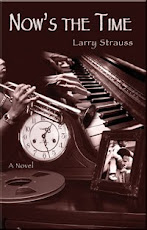
The first time I ever heard it, I was laying back in the chair at my jazz-loving dentist’s office and I was under the influence of laughing gas.
I tried, in my semi-delirium, to figure out what it was that I was listening to.
I thought I recognized the trumpet of Lee Morgan and the alto saxophone of Jackie McLean but I thought I’d heard pretty much everything those guys had done together and I’d never heard this particular stretch of upbeat high-energy, the trumpet and alto harmonizing above a soulful vamp.
I tried to ask the dentist what he was playing on the speakers but kept laughing at the sound of my own voice through the cotton. The dentist told me to hold still and drowned out the end of Lee’s solo with his own high-energy drill.
I kind of forgot about it after that—not sure if I’d really even heard it or it was just the nitrous oxide improving in my brain.
But about a year later I heard that tune, without the aid of any chemical, over the sound system in a Tower Records store in Marina Del Rey.
I rushed from the jazz aisle to the front counter, but the CD case wasn’t on display.
The pierced-up kids behind the counter didn’t seem to know what was playing. A girl in a bright beanie said there were “like eight CDs in the changer” and the player was “on random.”
A few years after that I heard it on the radio—KLON (the station now called KJZZ)—and made my daughter sit with me in the hot car till it was over and Jim Borges said what I’d been waiting now for almost three years to hear: “…and before that, we heard Easterly Winds out of the album of the same name by pianist Jack Wilson. The tune features Lee Morgan trumpet, Jackie McLean on Alto, Garnett Brown playing the trombone with Bob Crenshaw on bass, Billy Higgins at the drums, and the leader on that date, Jack Wilson behind the piano.”
I scribbled it down on the side of a Jiffy Lube receipt.
The next day, I went to Rhino Records, assuming they’d have a copy. They didn’t. No one did. Not even the Tower Records where I’d heard it. I asked someone behind the counter about it, told her I’d heard the album right there in the store a while ago. She said their manager liked to bring in his own stuff, just to listen. He wasn’t there to ask about it but the girl offered to order it. Together we looked it up in that thick book that was the phone directory of recorded music in the years before the internet. The girl had to make a phone call to get the price. She had to repeat it to me a few times before I couldn’t believe it.
$37—it was an import.
I wanted that music—but I just couldn’t bring myself to pay that much for a single disc. So I hustled the used bins across the city with no luck and finally found a store—Aarons Records in Hollywood—that would order it for under $20.
It took three car trips and two phone calls but, at last, I had it.
No CD player in my car in those days—I drove home with the disc still in its case on the seat next to me.
A 35 minute drive feeling the anticipation.
Then the wonder of discovery. Rediscovering the title cut that made me have to have it—and then hearing, for the very first time, the other swinging cuts: Frank’s Tune, Nirvana, Do It.
I don’t go to the jazz-loving dentist anymore. He is no longer a part of the “network” of my dental insurance.
There are no Tower Records stores anymore.
Thanks to radio state websites with their playlists, no one has to sit in a hot car with his daughter to find out the name of what just played.
Today, a person can download the Easterly Winds over their computer for 99 cents.
It would have been nice to have been able to do that when I discovered Jack Wilson.
But I’m kind of glad I didn’t.





